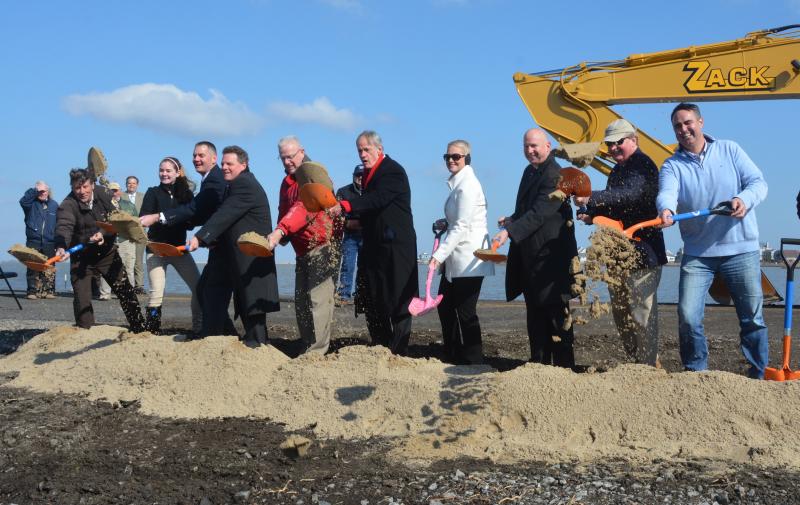Prime Hook Road bridge under construction

Work is underway at Prime Hook National Wildlife Refuge to build a new bridge designed to prevent frequent flooding that has plagued Prime Hook Road.
The five-month, $1.45 million project will not only improve access for Primehook Beach residents and decrease flooding; it is also part of the ongoing marsh restoration project at the refuge.
State and federal officials gathered March 21 on the causeway where the bridge will be constructed to break ground on the project.
The new bridge will cross the channel being dug to improve water flow throughout the refuge, reducing flooding on Primehook Beach Road, the residents' only access.
During construction, residents and refuge visitors will use a temporary road adjacent to the bridge project. Once the bridge and new road approaches are complete, the temporary road will be removed. The cost of the temporary road – nearly $375,000 – was included in the total project cost, said DelDOT engineer Barry Benton.
Zack Contracting of Smyrna is contractor for the project, expected to be complete in mid-July.
The contractor will build a 70-foot concrete-girder bridge on pilings about 5 feet above the channel. Pull-off areas for vehicles are also planned.
Prime Hook Road links Primehook Beach to Route 1 and passes through about 2 miles of Prime Hook refuge.
Funding for the project is split about 50-50 between state and federal funds, said U.S. Sen. Tom Carper of Delaware. “Prime Hook Road has seen its fair share of flooding and damage, and access to the Primehook community is sometimes dangerously cut off,” Carper said.
By alleviating flooding, access will improve, he said. “This is what I call a win-win for this crucial habitat and for the residents,” Carper said.
Delaware Department of Transportation Secretary Jennifer Cohan said the project shows collaboration between agencies. She said partners in the project include DeDOT, Delaware Department of Natural Resources and Environmental Control, Federal Highway Administration, U.S. Fish and Wildlife Service, Delaware's congressional delegation and U.S. Army Corps of Engineers.
Refuge restoration underway since summer
Over the past seven years, a series of storms – including Superstorm Sandy – breached the dune along the Delaware Bay coastline, allowing free flow of saltwater into the ecosystem that destroyed 3,000 acres of freshwater marsh.
A $38 million Prime Hook refuge restoration project is well underway. Channel dredging and work to restore the marsh to a saltwater marsh began in summer 2015 and is expected to take about a year. The channels will improve water flow within the refuge.
A replenishment project of 7,000 feet of beachfront and dune line began in late fall 2015, part of one of the largest marsh restoration projects ever in the eastern United States.
“When we finish, we'll let Mother Nature take over,” said Al Rizzo, project leader for Coastal Delaware Wildlife Refuge Complex, which includes Prime Hook and Bombay Hook.
Prime Hook refuge – made up of more than 10,000 acres – was established in 1963 under the Migratory Bird Conservation Act.
Why remove the new road?
DelDOT spokesman Geoff Sundstrom said any work performed in a national wildlife refuge is closely regulated to protect the ecosystem as much as possible and restore it to a condition that is as good as, or better, than before the work started.
In addition, Sundstrom said, the existing roadbed has been compacted over many years, making it the best location for building the new road and bridge.
“The compaction makes the base far more durable and ultimately less expensive to elevate to a permanent condition than the temporary fill that was placed under the new pavement. The fill under the new road is porous by design and is imbedded in construction fabric to allow water to flow through it. This will make it fairly easy to remove when the job is complete,” Sundstrom said.



















































